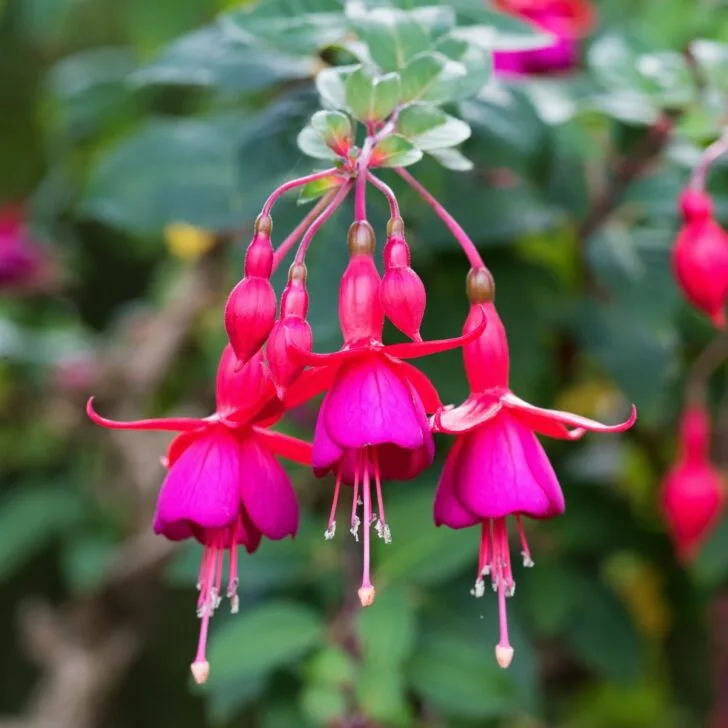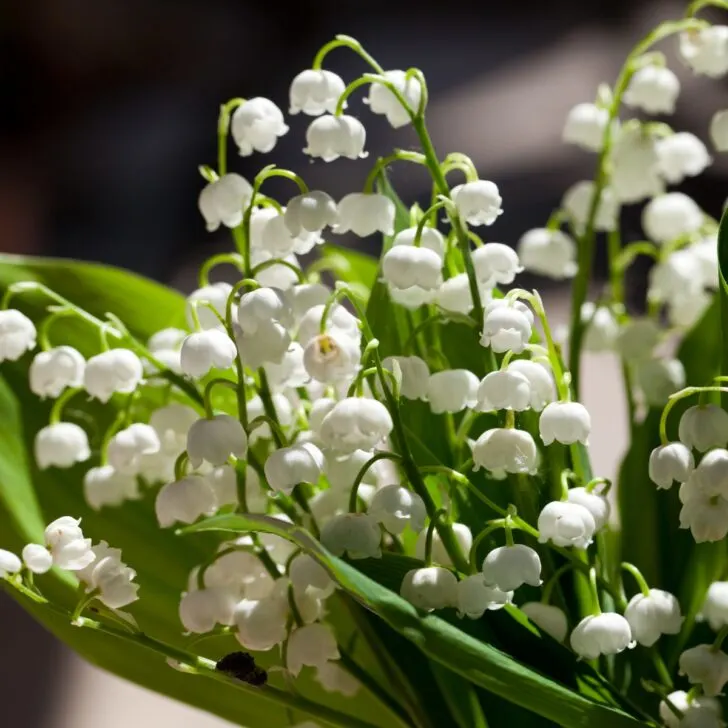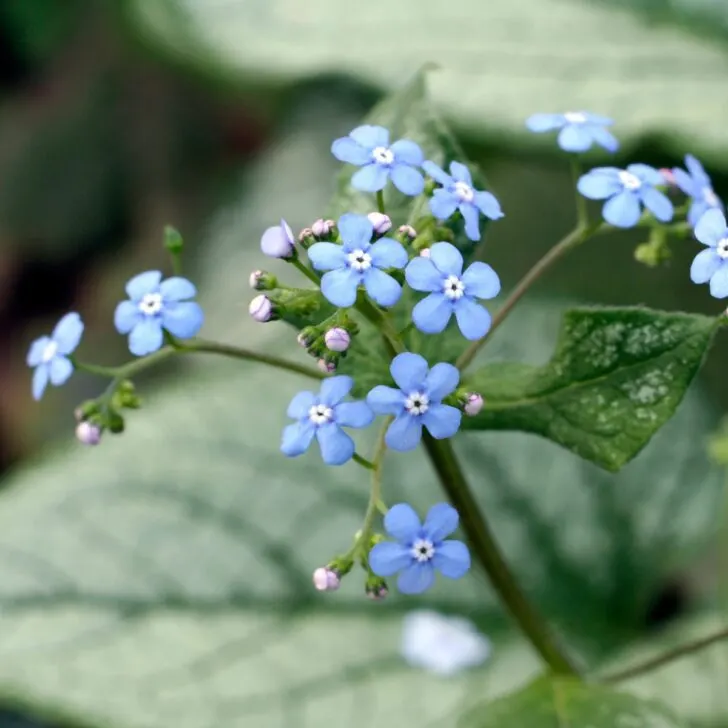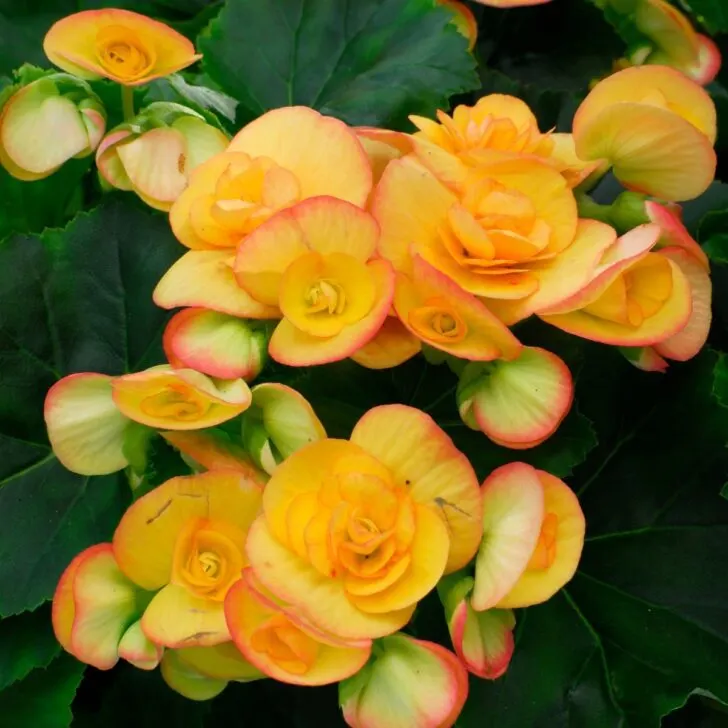Bleeding hearts are a spring perennial with unique heart shaped blooms that prefer shade. Learn how to grow bleeding hearts in your garden!
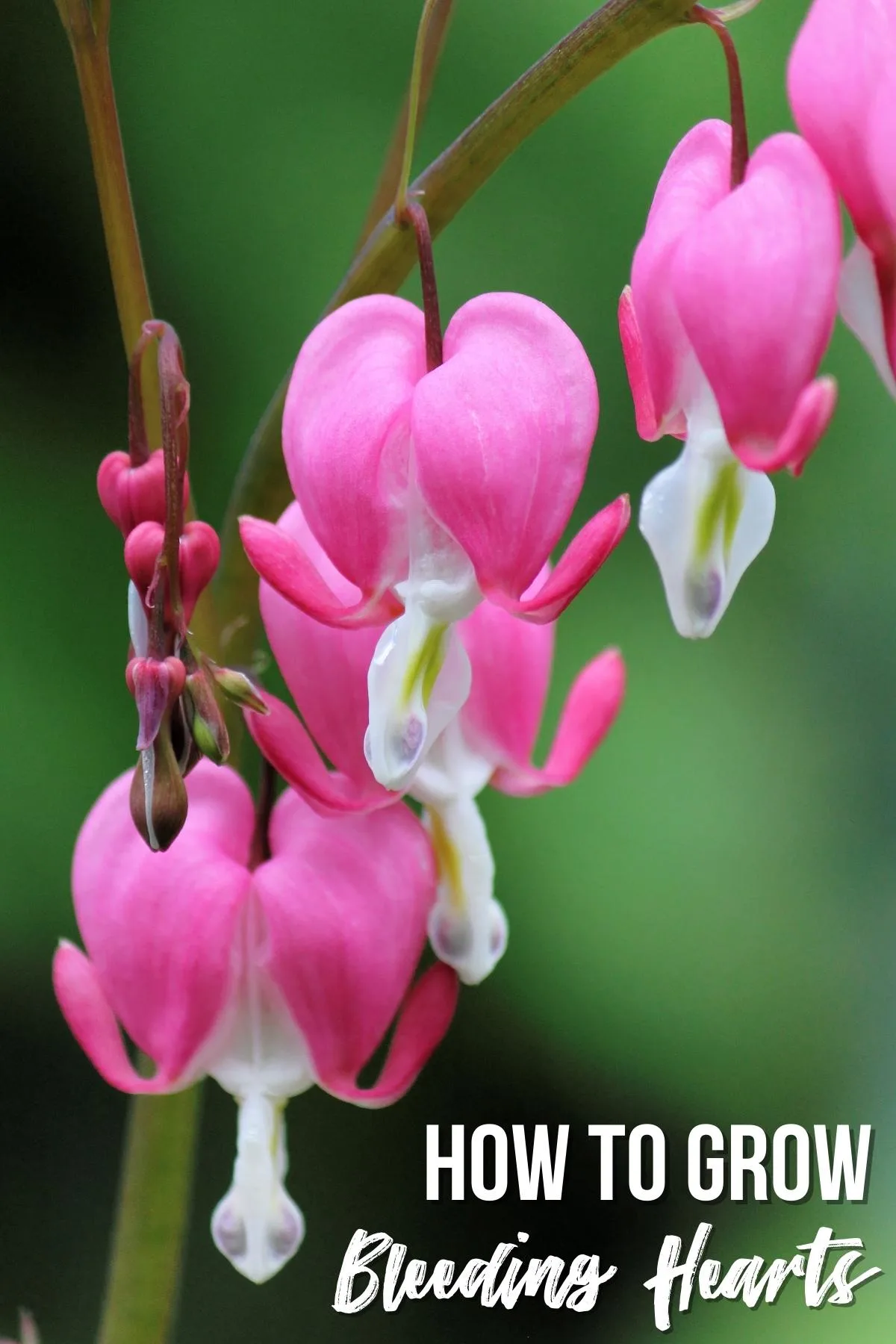
When I was a little girl, bleeding hearts were one of my favorite flowers. I just loved the delicate strands of heart shaped blooms that signaled that spring was finally here!
Bleeding hearts, also known by their latin name dicentra spectabilis, start producing flowers as soon as temperatures warm in spring. They bloom for about a month, producing many delicate, heart-shaped blossoms dangling from thin stems.

In summer, the flowers turn into elongated seed pods that look like tiny green beans. When the pods dry, the black seeds fall to the ground and often sprout up the following season.
Bleeding hearts die back in mid-summer when temperatures rise, so consider situating them near bulbs or other flowering plants that bloom later in the season to prevent a blank spot in the landscape.
Here's how to grow bleeding hearts in your garden!
This post contains affiliate links for your convenience. Purchases made through these links may earn me a small commission at no additional cost to you.
Bleeding Hearts Varieties
There are several cultivars and species of bleeding hearts to choose from, differing in flower color, mature plant size, and tolerance to sun exposure and heat. The different types grow between 6 inches and 3 feet high, spreading up to 4 feet wide.
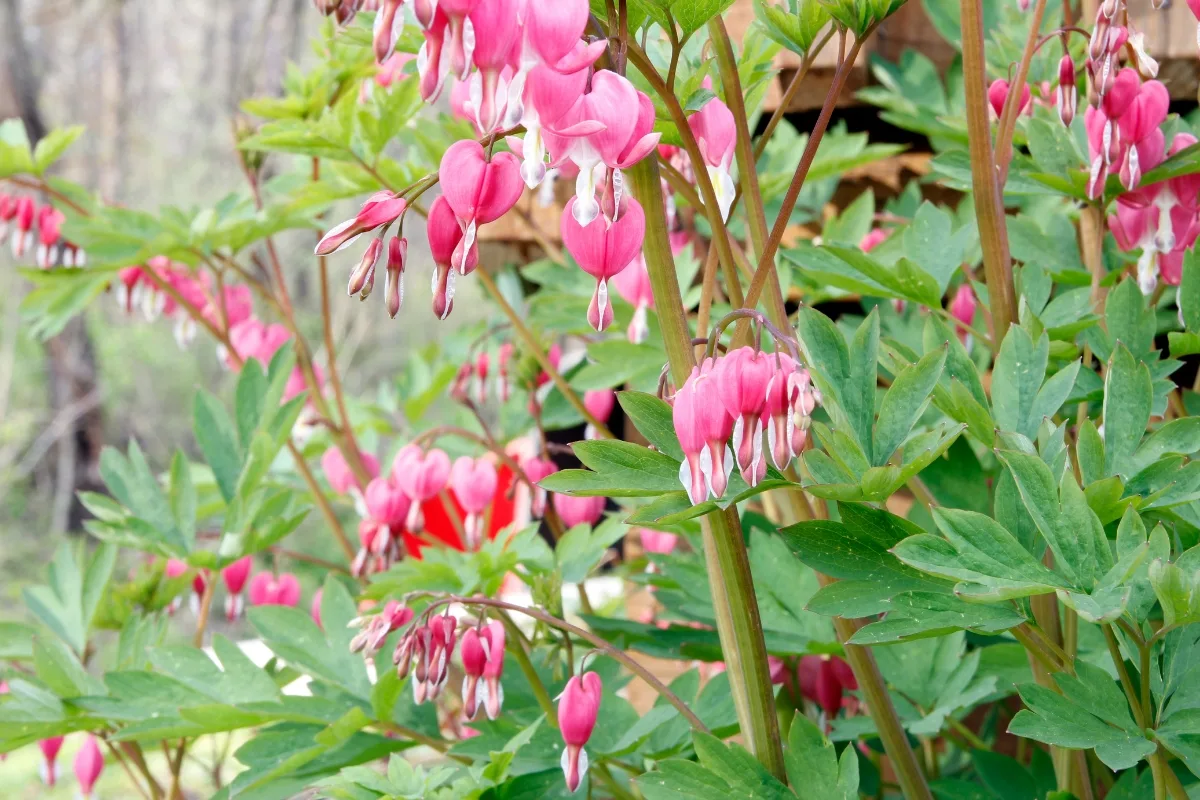
You can find bleeding heart varieties with white, red, yellow, pink, and even blue flowers and combinations of these colors. Varieties include:
- 'White Gold' with white flowers and yellow stems.
- 'Alba' with white flowers and slightly better heat tolerance than others.
- 'Amore Pink' is a variety that grows to 18-inches tall with pink flowers.
- 'Burning Hearts' with dark red flowers that attracts hummingbirds.
- 'Dutchman's Britches' has white flowers with yellow tips that attract bees.
- 'Pacific Bleeding Heart' is a US native species with eye-catching pink and purple blossoms.
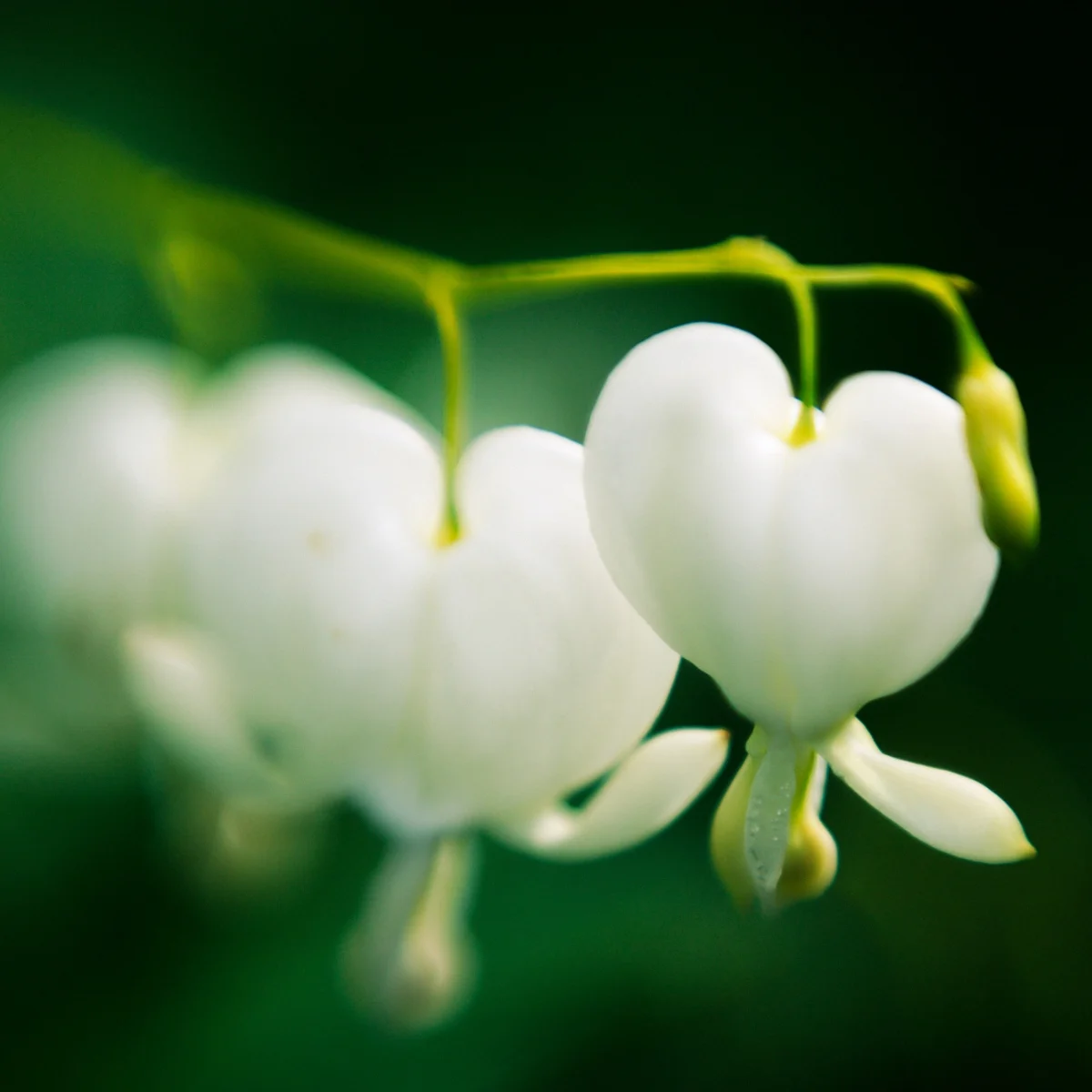
When to Plant Bleeding Hearts
Plant bare-root bleeding hearts in early spring when the roots are dormant and after the last frost.
Where to Plant Bleeding Hearts
Bleeding hearts prefer locations with a mix of light shade and dappled sun where their roots stay cool and moist. In cooler geographic regions, they can grow with more sun exposure as long as the soil stays evenly moist.
They need humus-rich, well-draining soil with a neutral to slightly alkaline pH, although they can tolerate clay and sandy soil as long as it stays damp but not soggy.

Bleeding hearts are a pleasing addition to wildflower gardens, cottage gardens, and shady borders around the house and in woodland settings. Consider combining them with hosta, astilbe, ferns, impatiens, or other plants that thrive later in the season when bleeding hearts start to die back.
You can also plant them in large containers in a fertile potting mix for shady spots on a deck or patio. While they prefer being outdoors, you can also try growing them indoors as a houseplant.
How to Plant Bleeding Hearts
You can buy bleeding heart plants or bare roots at a nursery or online. Or, you can start bleeding hearts by dividing roots in late fall or early spring when growth is dormant or sprout them from cuttings or fresh seeds.
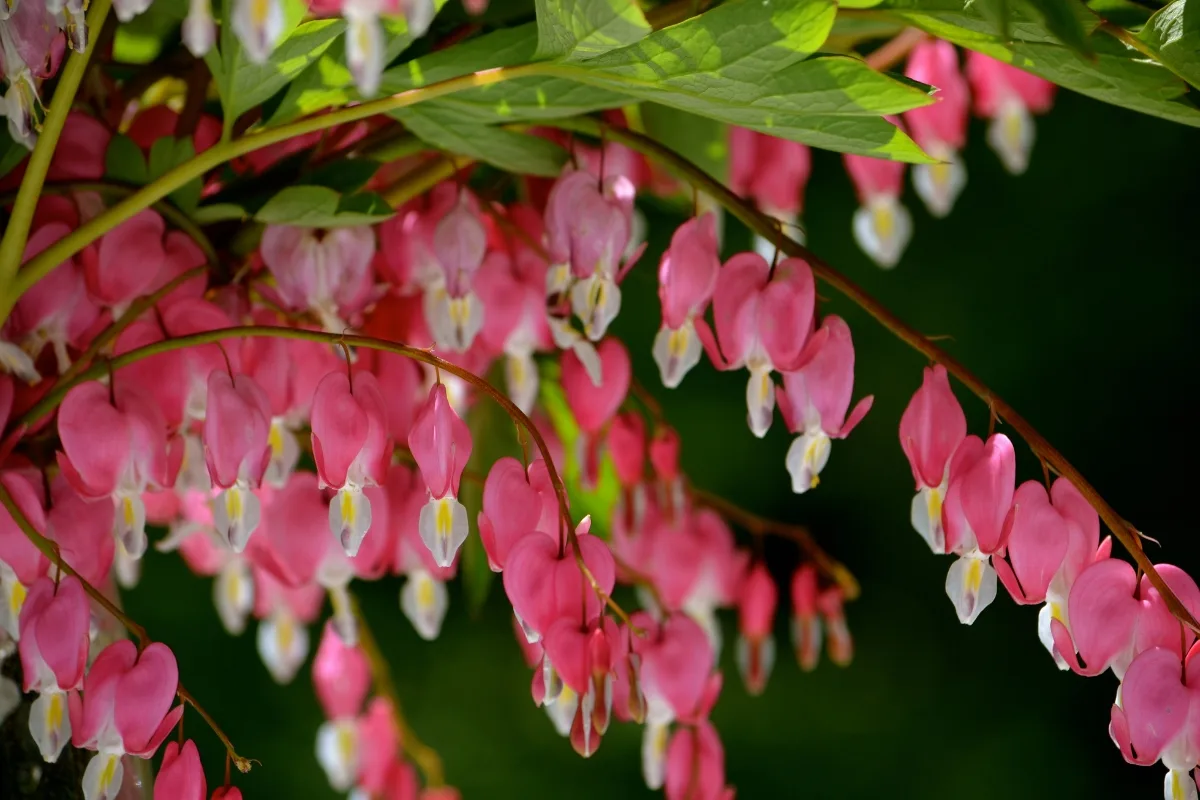
However, bleeding hearts seeds need a long period of cold, moist stratification and often take a long time to germinate. In addition, plants grown from seed can take up to three years to bloom.
How to propagate bleeding hearts from cuttings
Here are the steps to grow new bleeding heart plants from a cutting:
- Remove pencil-thick stems from a healthy plant in late winter.
- Trim the bottom end of the stem about 1 inch below a node, cutting it at a 45° angle.
- Make a square cut at the top of the stem, leaving a cutting about 6 to 8 inches long.
- Dip the bottom inch of the stem into a semi-hardwood rooting hormone.
- Place the cutting in a 6-inch pot filled with a mix of 40 percent garden soil and 30 percent each peat moss and compost with at least one node set below the top of the soil surface.
Water the pot and put it in bright light. Water it again whenever the top of the potting mix dries until the leaves sprout. When the stems leaf out, start keeping the soil evenly moist.
When transplanting a bleeding heart into the garden, set the crown just below the soil surface, careful not to damage the tiny, brittle roots. Then, give the plants regular applications of liquid fertilizer for maximum flowering.
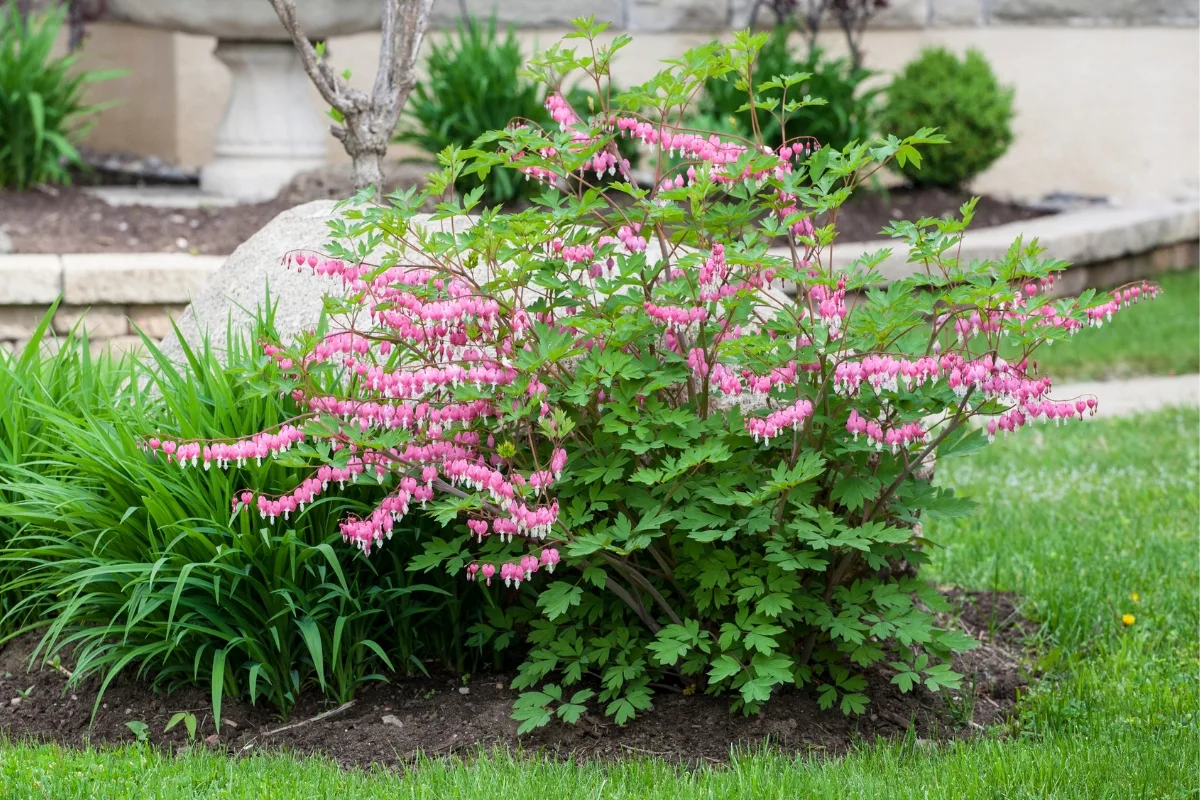
How to Care for Bleeding Hearts
When the flowers are done, you can trim off the spent stems. Doing this may delay the plant's dying back or promote a second flush of blossoms. When the stems are entirely dead, you can cut them down to the ground or let them decompose to add nutrients back into the soil.
Besides regular water and occasional fertilizer, bleeding hearts do not need much care. They are seldom bothered by pests, although aphids can infest the flowers, and slugs might eat the foliage. You can control aphids by washing them off with a hose and picking slugs off by hand.

